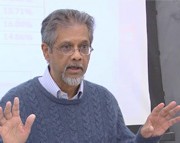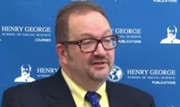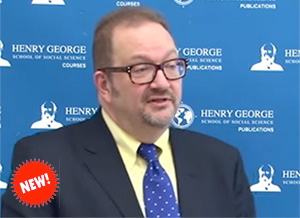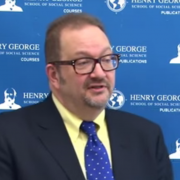The big economic news this week has been the Federal Reserve’s decision not only to keep interest rates at their still super-low level, but to signal that they will stay there longer than previously indicated. This Fed dovishness has many economists and finance types indignant, since they believe that the American economy is amply strong enough to withstand more normal credit costs, and because they fear that ongoing floods of easy money will encourage the type of reckless investment that helped inflate the housing and spending bubble of the previous decade.
I agree with the bubble fears. But it’s hard to believe that anyone bullish on the U.S. economy has been looking at the data. For we got two major indications this week that American performance is still failing a key test – spurring strong enough growth to produce a healthy labor market characterized by adequately rising wages.
The first batch of evidence came on Wednesday, when the Labor Department issued its latest report on inflation-adjusted wages. Once again, they powerfully undermined the widespread view that this measure of pay is showing signs of meaningful life. The data revealed that after-inflation hourly wages for all private sector workers flat-lined month-to-month between January and February. Revisions were positive, but only microscopically so on net, with January’s monthly gain raised from 0.38 percent to 0.57 percent (the best such improvement since last January). But the December number was lowered from 0.19 percent to 0.09 percent.
In addition, let’s not forget that, for the last two Januarys, wage figures have been significantly influenced by mandatory minimum wage hikes in many states – which reveals nothing about the underlying vigor of the labor market.
Year-on-year, the new statistics look little better. From February, 2015 to February, 2016, inflation-adjusted wages were up only 1.23 percent – considerably less than their 1.94 percent rise between the previous Februarys. In fact, it’s the lowest annual increase since last August’s.
As a result since the current economic recovery began in the middle of 2009, real private sector wages are up a grand total of 3.39 percent. That’s over a nearly seven-year stretch.
The story in manufacturing is pretty dismal, too. February after-inflation wages rose just 0.09 percent from January levels. January’s 0.28 percent monthly improvement stayed unrevised.
On an annual basis, real manufacturing wages rose 1.22 percent in February – also less than the 1.33 percent increase from February, 2014 to February, 2015. But at least it was better than January’s year-on-year improvement of 1.13 percent. These results left real manufacturing wages a grand total of 0.37 percent higher than at the start of the recession – rounding error territory.
The day after these dreary wage numbers were released, Labor came out with its monthly figures on turnover in the labor force. As known by RealityChek regulars, these figures are taken very seriously by Fed Chair Janet Yellen, so I track them as well, and focus on the job openings (“JOLTS”) data. Throughout the recovery, they’ve told a tale of a labor market increasingly dominated by low-wage sectors of the economy. The new statistics, which cover January, and incorporate revisions going back to 2000, sustain this narrative.
To review, I define low-wage industries as comprising the retail sector, the leisure and hospitality sector, and the administrative and support sub-sector of the professional and business services sector. The turnover data doesn’t break out the latter, but I (reasonably) assume that job openings in the industry resemble its overall employment levels.
At the beginning of the last recession, according to the latest figures, in December, 2007, these low-wage sectors together generated 31.94 percent of the economy’s total job openings. By mid-2009, when the current recovery began, their share actually fell to 28.38 percent. But in January, they stood at 32.34 percent.
Individually, the real wages and the turnover figures tell a powerful enough story of a national job-creation engine missing some major cylinders. By reinforcing one another, their collective message seems irrefutable. There’s still a legitimate debate over whether continuing the Fed’s super-easy money policy is the best way to heal the American labor market. But there can’t be much legitimate doubt that such healing remains urgently needed.

















